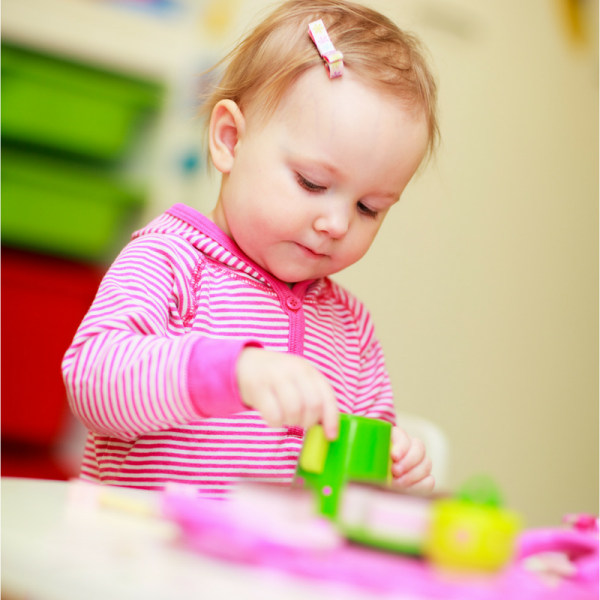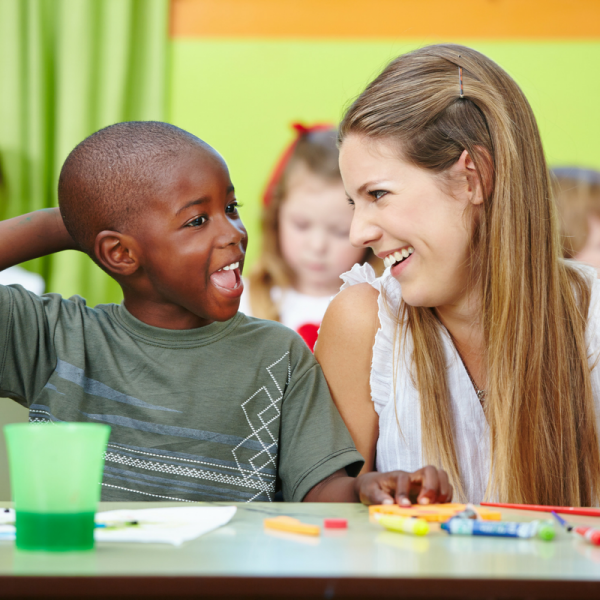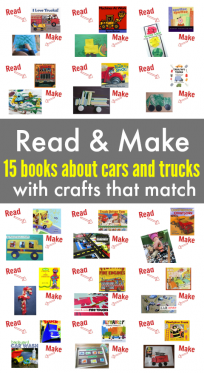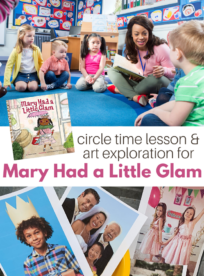If you are a preschool or kindergarten teacher you probably hear, read, or say the words Developmentally Appropriate Practice (DAP) a lot. Or maybe you just hear it and haven’t really ever fully understood what it means. When I started teaching Pre-Kindergarten in a child care environment I had a degree in elementary education, and I was never taught about DAP. I had to learn that on my own. Many preschool teachers ( maybe you) enter into the field from other industries after staying home with their own children and have little if any formal instruction in ECE. That is why I wanted to share a basic overview of what Developmentally Appropriate Practice is and more importantly how you can follow it in your early childhood classroom.

To read NAEYC’s full position statement on DAP click here.
Developmentally Appropriate Practice – Best Practice for Early Childhood Programs
The guidelines that Developmentally Appropriate Practice lays out are child-centered actions that early childhood educators can follow to provide the best learning environment and provide the best practice for teaching children zero – eight years old. These guidelines are what we call researched based which means that they have been developed through research about how children learn.

1. Teachers and early childhood programs serving young children must understand how children learn and develop.
How do YOU do that in your classroom?
Many preschools offer staff little to no budget for professional development. This means it is up to teachers to seek out and find information independently. Luckily, wonderful resources are available to become more proficient at understanding development and how children learn. The five sites listed below are five trusted sources I have and do use for my ongoing education in child development and learning.
National Institute for Early Education Research
Zero to Three
NAEYC – National Association for The Education of Young Children
American Academy of Pediatrics
Not Just Cute – Whole Child Development
Tip: Sign up for newsletters and stay on top of new research, new trends, and topics facing early childhood education.
2. Teachers and Programs Must Treat Each Child As An Individual
To best educate a child you must know that child. I advocate focusing on connection through play because learning improves, and so does the behavior. Teachers need to know what students like, what students are capable of, and how they are developing and learning.
How do YOU do this in your classroom?
Through ongoing assessment and adjustment of activities and curriculum.
Before you say you can’t assess a toddler, and you don’t want a preschooler tested, let me paint a picture of what developmentally appropriate assessment looks like. It can be through play; it can be sitting next to a 3-year-old at the play dough table and talking about what you are making. It can be recalling a book you read earlier in the day while pouring water in the sensory table, and watching your toddlers on the playground to see if they are alternating their hands and feet as they climb on the play structure. As a preschool teacher, you should always be observing and assessing, but there is no need to test your students. Meet them where they are and support them to the next step when they are ready, individually.

Meeting children’s needs individually can seem daunting, but if you have structured your classroom schedule with ample play time, it is considerably less of a challenge. When children play they will naturally differentiate to their level of learning; take this example from my classroom last year:
One morning in my classroom I put out the play dough and added letter tiles to the table. Nearly all my students who were 2.75 years – 3.5 years at the time spent some time at the table exploring. Some children ignored the letter tiles completely; they were uninterested in letters and used the play dough and other tools at the table to squish and create. Other children hid the letters in the play dough and identified them ( some correctly, some not), some used the tiles to spell invented words, and one used them to correctly spell her name. I didn’t tell any of the children how to use these materials; I played with them scaffolding their learning when they were open to it.
Play is key to being able to easily differentiate and meet individual needs in preschool classrooms.

3. Classrooms and Programs Must Be Culturally Appropriate
Culturally appropriate is often the part of DAP that teachers struggle with. This seems like a big task for many teachers but it can be simplified to mean that early childhood educators take the time to understand where a child is coming from, to build strong home school connections, and to use that information to make the child’s learning experience more meaningful. Children learn better when the topic or task is meaningful.
How do YOU do this in your classroom?
Send the classroom home, and invite the family in. I don’t mean you have to send your classroom home with your students or even have the parents in your classroom ( which can be a serious struggle for working parents). What I mean is finding ways to be the bridge between home and school. Some simple ways include:
– Book bags with books parents can read and with their child and return to school. For Spanish-speaking parents investing in some popular board books in Spanish is well worth it if the budget allows it.
– Create a family photo wall and use it for activities.
– Invite parents to share a favorite recipe or other family tradition.
– If possible meet with families in their homes to learn about the strengths and talents that they can offer to your classroom during or outside of school hours.
– Offer family activity nights at your school that is outside of any parent-teacher conferences.

In addition to these ideas having one or two primary teachers in a classroom is important. Communication is key to understanding and giving parents one or two teachers to connect with, allowing them to build trust and a relationship that helps children with and without challenges. Here are more ways to make communication with parents simple.
Examples of developmentally appropriate learning activities

So now that you know that the most important parts of DAP are to understand how children learn and develop, to treat each child as an individual, and to have a culturally appropriate environment many of you want some examples of developmentally appropriate learning activities. I can’t do that. Or I could, but they won’t necessarily be developmentally appropriate for your students.
Activities that are developmentally appropriate for my students by not be developmentally appropriate for your students even if they are all 5 years old.
DAP activities for preschool can look like all kinds of things. For my class last year, this included letter sound activities, number lines, and in-depth science experiments. This year I have had to shift and provide different activities for my students who are working on different skills and have different challenges. Teach the child in front of you. If that child needs a challenge don’t shy away from activities that meet them where they are at, even if it seems academic – developmentally appropriate means understanding what the child in front of you needs, not using a general checklist for the age and stage. The best way to do this is to provide ample play in your classroom. Get to know your students and use that knowledge to create differentiated learning experiences. This is how we meet and teach the child in front of us. This is DAP.




Vera Clinton says
Thanks this was really helpful.
Ana G says
Great!!!! I love the way you explain DAP… It helps me a lot!!
Kristy Larson says
You are so very helpful! Thank you for posting all this wonderful information!